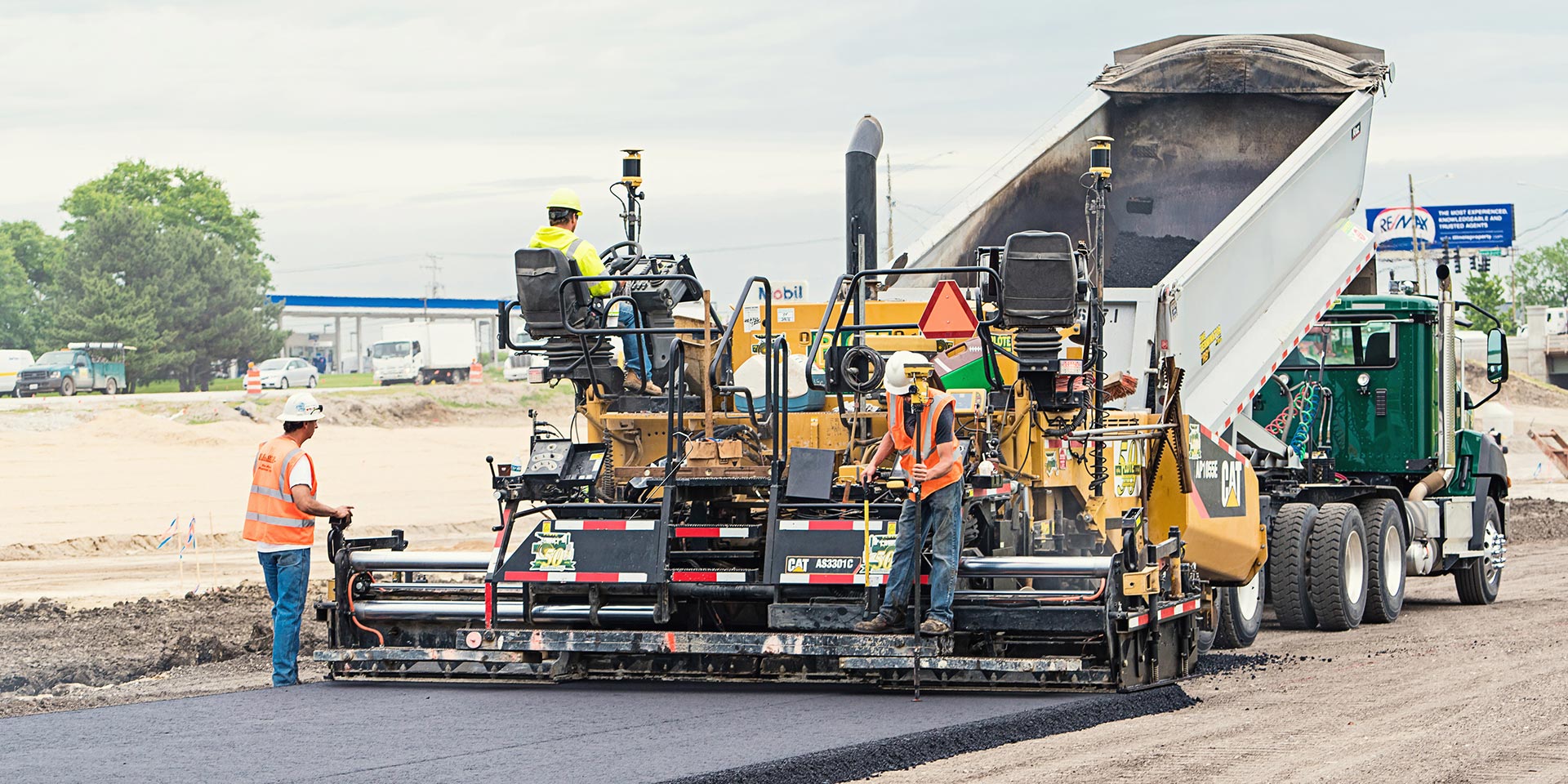Topcon asphalt paving systems allow you to combine and configure groups of components and sensors for your project needs. This is one example, but you can learn about additional configurations here
Choose the right setup for your project and budget
Topcon asphalt paver systems give you the flexibility to set up your paver to meet your project’s demands. Choose from entry-level systems that follow a reference, such as a string or a curb; or automated solutions that track your paver in 3D and lay a variable-thickness mat for ultimate road smoothness.
Sample configuration

1. GNSS receivers, mmGPS, prism, etc.
2. Display
3. Robot
4. Sonic and other sensors
5. Thermal Mapper
Virtual Ski dramatically cuts design time
Virtual Ski is made for federal and country roads and other scenarios where there are fewer fixed points or intersections to match. Simply scan and mill or lay the base layer and let the milling machine or the paver do the surface design job. Our 3D-MC milling/paving software lets you replace analog Multiplex-Ski, Big Ski, or Sonic Ski models and offset the Virtual Ski from 4 to 100 m off your chosen alignment, even on sharp curves. This results in a reduction of ski installation downtime; production of a smooth surface more quickly with less effort; and significant time savings, thanks to eliminated design activities.
Major brands supported:
Voegele
Dynapac
Ammann
Bomag
Volvo
CAT
Sany
Sumitomo
Apollo
Related offerings
Get in touch
Thank you! We will be in touch.

























